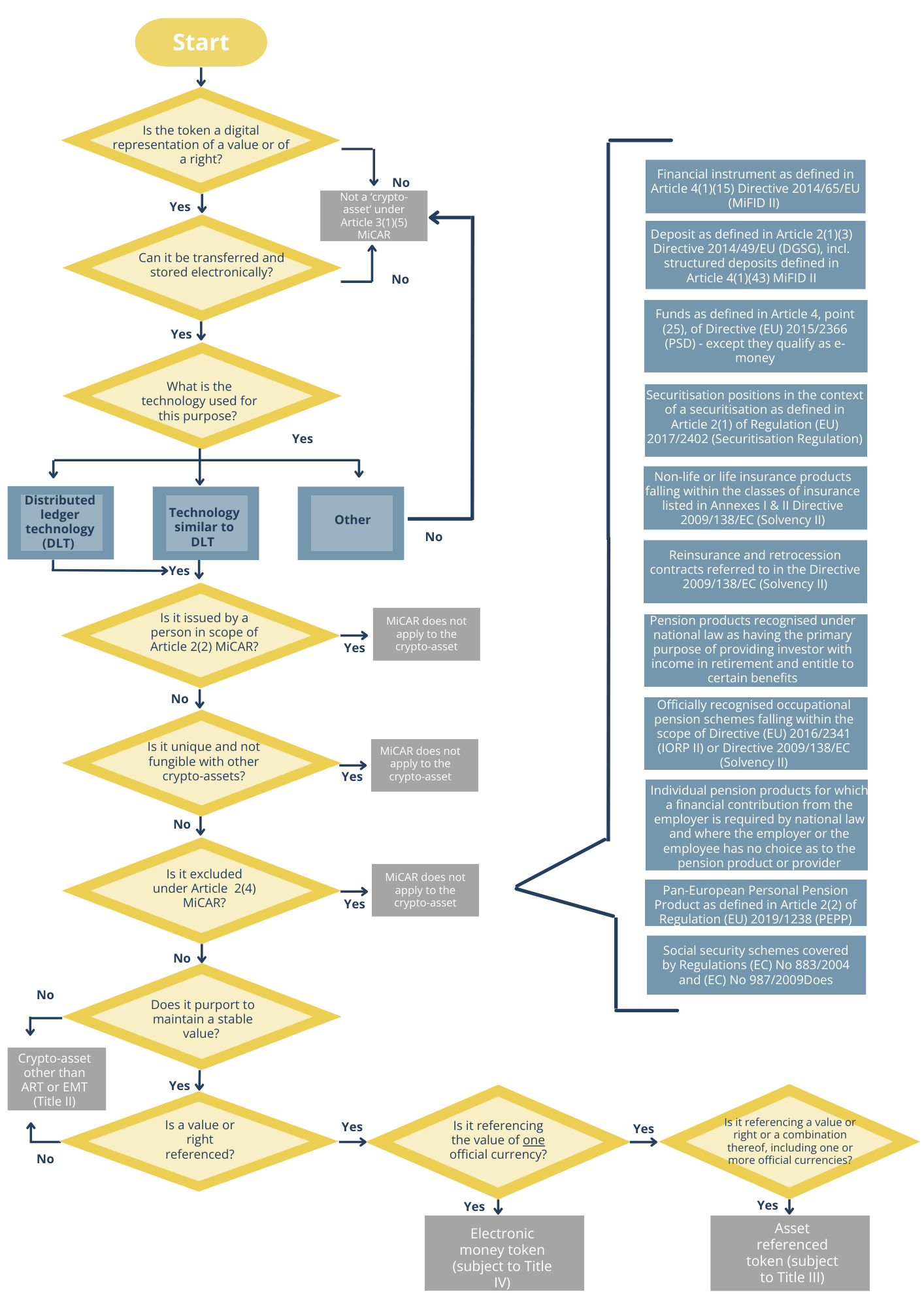20h30 ▪
3
min of reading ▪ by
Europe clearly demonstrates its seriousness in regulating cryptocurrencies with the announcement of new guidelines under the MiCA regulation. On July 12, European banking and financial authorities published these guidelines to standardize the classification of crypto-assets. Today, we dive into these new regulations and their potential impact on the crypto market.
A new era for crypto-assets
Europe is making great strides in regulating cryptocurrencies, particularly stablecoins. On July 12, the European Banking Authority (EBA), the European Insurance and Occupational Pensions Authority (EIOPA), and the European Securities and Markets Authority (ESMA) unveiled a series of guidelines for the classification of crypto-assets under the MiCA regulation.
The goal is to establish a common and standardized approach to categorize the different forms of crypto.
These new rules include a set of questions to determine whether a token should be classified under MiCA or falls under another category, such as e-money tokens (EMTs) or asset-referenced tokens (ARTs).


Issuers must now provide detailed legal opinions to clarify the classification of their tokens.
It is essential to note that these guidelines also include explanatory models and standardized tests, designed to help market participants and supervisors adopt a uniform approach.
“We aim for a harmonized classification of crypto-assets, which will bring more clarity and legal security for investors,” according to an ESMA official.
The roadmap of MiCA regulations
The implementation of the first MiCA regulations on stablecoins took place on June 30, with additional regulations expected by December 2024.
Circle, the issuer of the USDC and EURC stablecoins, has already complied with MiCA standards, illustrating the speed at which the market is adapting.
The new guidelines also include an open public consultation until mid-October, and a virtual hearing is scheduled for September 23.
Key points of the new regulations:
- Introduction of a series of questions to classify tokens;
- Explanatory models and legal opinions required for each token;
- Public consultation and virtual hearing to discuss the guidelines.
These steps show that the European Union is serious about harmonizing crypto rules, aiming to create a stable and transparent environment. The expected standardization should offer better protection for investors and encourage innovation in the field of cryptocurrencies.
The MiCA regulation is a decisive step forward, offering essential guarantees to investors and enhancing transparency in the crypto-asset market in Europe.
Maximize your Cointribune experience with our ‘Read to Earn’ program! Earn points for each article you read and gain access to exclusive rewards. Sign up now and start accruing benefits.
Click here to join ‘Read to Earn’ and turn your passion for crypto into rewards!
La révolution blockchain et crypto est en marche ! Et le jour où les impacts se feront ressentir sur l’économie la plus vulnérable de ce Monde, contre toute espérance, je dirai que j’y étais pour quelque chose
DISCLAIMER
The views, thoughts, and opinions expressed in this article belong solely to the author, and should not be taken as investment advice. Do your own research before taking any investment decisions.
Credit: Source link






